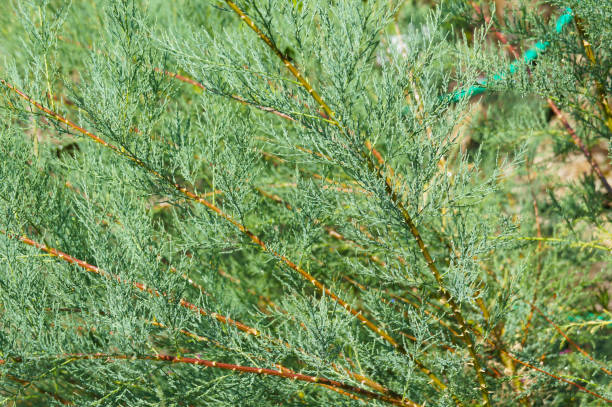A stunning showpiece for landscapes, the Moonglow Juniper, with its silvery-blue foliage and unique growth habit, is truly a skyward beauty. This hardy, evergreen shrub thrives in various climates, making it a popular choice among gardeners and landscapers. This article delves into understanding the Moonglow Juniper and provides comprehensive care tips for this enchanting plant.
Getting to Know the Moonglow Juniper
Understanding the Moonglow Juniper’s unique features and natural habitat can guide your cultivation efforts.
Distinctive Features
The Moonglow Juniper (Juniperus scopulorum ‘Moonglow’) stands out for its dense, upright growth habit and its stunning silvery-blue foliage, which gives it a moonlit appearance. It is a variety of Rocky Mountain Juniper and can reach heights of up to 20 feet, providing a distinctive, conical shape that adds structural interest to landscapes.
Natural Habitat
This North American native is remarkably resilient, thriving in hardiness zones 3 to 7. It prefers full sun and well-draining soil, and once established, it’s drought-tolerant and can withstand cold winters.
Ideal Conditions for Moonglow Juniper
To thrive, the Moonglow Juniper requires specific conditions that resemble its natural habitat.
Light and Temperature
The Moonglow Juniper is a sun-loving plant that needs at least six hours of direct sunlight each day. It also tolerates a wide temperature range, making it versatile for various climates. However, it’s most comfortable in temperate to cold climates.
Soil and Watering
This juniper variety prefers well-draining soil, which prevents water-logging and root rot. When it comes to watering, consistency is key. Although drought-tolerant, Moonglow Junipers prefer evenly moist soil, particularly during their establishment period.
The Right Care for Moonglow Juniper
Proper care involving pruning, feeding, and disease control can keep your Moonglow Juniper healthy and vibrant.
Pruning
The Moonglow Juniper grows in a natural pyramidal form that usually requires little pruning. However, you can prune to maintain size and shape or remove dead or diseased branches.
Feeding
While the Moonglow Juniper isn’t a heavy feeder, applying a balanced slow-release fertilizer in early spring can support vigorous growth.
Disease and Pest Control
Junipers, in general, are susceptible to pests like spider mites and diseases such as root rot or blight. Regularly inspect your juniper and treat any infestations or diseases promptly with suitable insecticides or fungicides.
Landscape Uses for Moonglow Juniper
With its architectural shape and attractive foliage, the Moonglow Juniper can serve multiple functions in your landscape.
As a Specimen Plant
Thanks to its striking conical shape and silvery-blue color, the Moonglow Juniper makes a spectacular specimen plant. It can stand alone as a focal point in your yard or garden.
For Screening and Hedging
The dense, upright growth of Moonglow Junipers makes them excellent for creating privacy screens or windbreaks. Planted in a row, they form an attractive and effective hedge.
Propagating Moonglow Juniper

Propagation of Moonglow Juniper is typically done through cuttings.
Propagation Steps
To propagate, take a 6-inch cutting from a healthy Moonglow Juniper in late summer. Remove the lower leaves, dip the cut end in rooting hormone, then plant it in a pot with a mix of peat moss and perlite. Keep the cutting in a warm, humid place until it develops roots, then transplant it outdoors.
Conclusion
The Moonglow Juniper is indeed a skyward beauty that brings an element of elegance and drama to any landscape. With the right conditions and proper care, you can enjoy the year-round beauty of this hardy, evergreen shrub. Whether you’re a seasoned gardener or a beginner, the Moonglow Juniper is a worthy addition to your green space.

